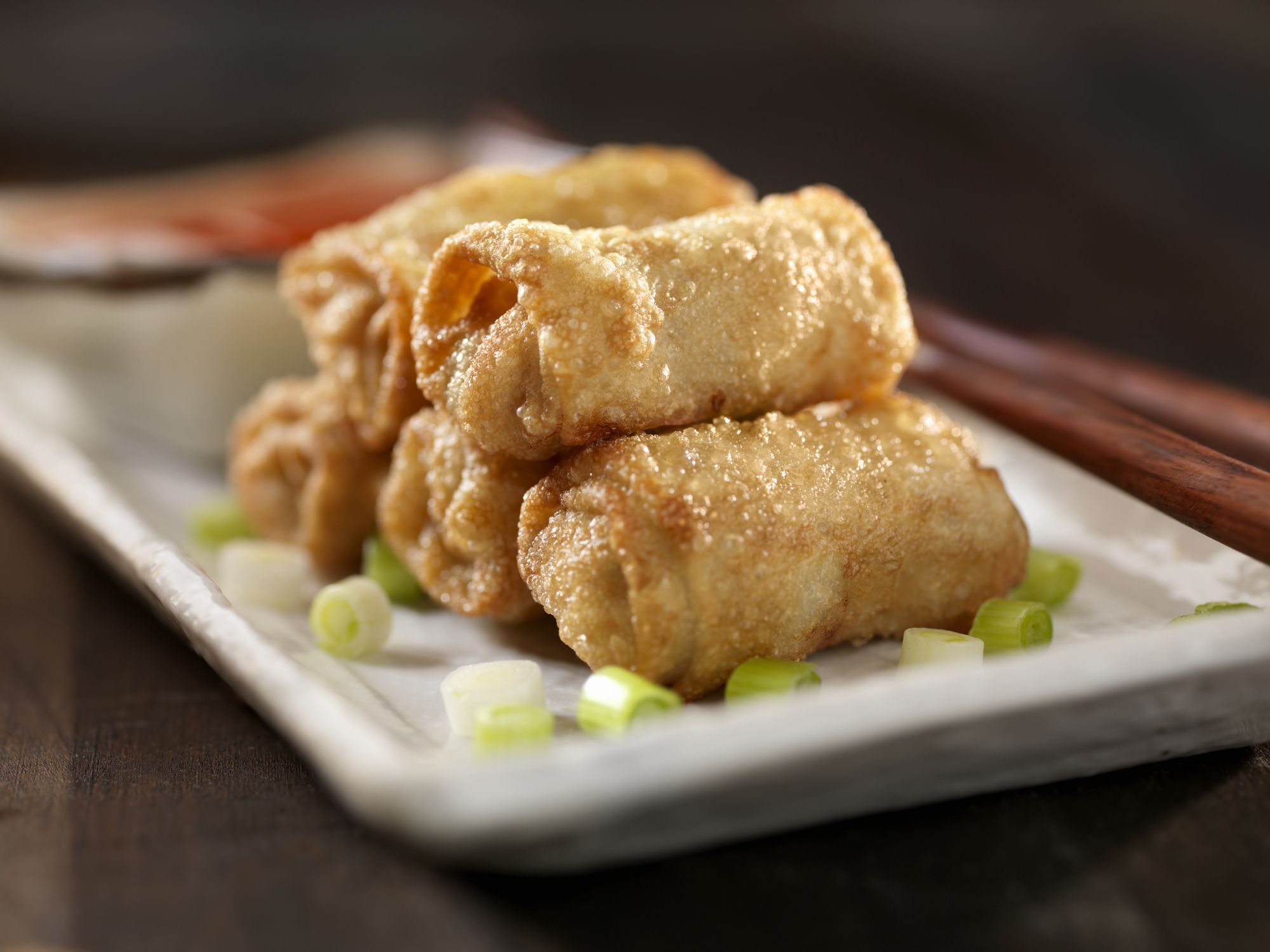Pho Soup Is Actually Pretty Damn Healthy So Get Yourself A Bowl
Sometimes, nothing quite hits the spot like a steamy bowl of noodles—and ramen is no longer the only trendy option. These days, everyone seems to be slurping down pho (pronounced “fuh”) instead. Just how nutritious the recently-buzzy dish is (and how many calories pho contains), though, is still a little unclear.
“Pho originated hundreds of years ago in Vietnam and started as a humble street food,” says nutritionist Tessa Nguyen, RD, founder of Taste Nutrition Consulting. “It’s traditionally an aromatic beef broth-based soup served with rice noodles, pieces of beef, and lots of fresh herbs.” Basically, comfort in a bowl.
Quality pho starts with quality broth. Nguyen typically makes hers by simmering roasted beef bones with charred onions, daikon, ginger, and aromatic spices like star anise, cinnamon, coriander seeds, and cloves for at least 24 hours.
Once finished, the broth is poured over thinly-sliced pieces of raw beef and cooked rice noodles. Then come your choice of garnishes, including add-ons like sliced green and white onions, cilantro, jalapeño slices, bean sprouts, and lime. Condiments like fish sauce, soy sauce, hoisin sauce, and Sriracha finish off the dish.
What’s not to like? If you’re curious about just how good for you pho actually is (and how many calories your average savory bowl contains), there are a few things you should know.
How many calories are in pho?
The short answer here: It depends.
“Pho has been enjoyed by Vietnamese families for centuries,” says Nguyen. “Every family has a different recipe and how they serve it varies, too. It wasn’t created to be a diet food or fit into a calorie count.”
Given that, pho’s calories vary depending on the size of the bowl you eat, how many noodles you add, and what protein you use (like a fattier cut of beef versus shrimp), she says. Plus, whether you’re cooking up pho at home, ordering it out at a restaurant, or eating a pre-packaged version also influences how many calories you’ll slurp down.
Here’s what you get in one cup of your average homemade beef pho, according to the USDA Nutrient Database:
- Calories: 215
- Fat: 5.47 g
- Carbs: 25.2 g
- Fiber: 1.22 g
- Protein: 15 g
- Sugar: 1.93 g
- Sodium: 1200 mg
And in one serving of packaged vegetable pho from Snapdragon:
- Calories: 210
- Fat: 1.5 g
- Carbs: 45 g
- Fiber: 2 g
- Protein: 4 g
- Sugar: 2 g
- Sodium: 1240 mg
Obviously, you’ll likely get more than one cup of pho in your average restaurant serving, though. You should also note that many recipes are also high in the sodium department and contain some added sugar.
So, is pho healthy?
In theory, “pho is a great dish because it features all the components you need: healthy carbohydrates, protein, and fat,” says Nguyen. (That balance of a protein source, veggies, and broth is key.)
In addition to protein, the beef in traditional pho also provides B vitamins, zinc, and iron, Nguyen says. Depending on which herbs and veggies you add to your bowl, you score some fiber and other vitamins, too.

The seasonings you add to your pho can also enhance its benefits. “Spices are sources of important photochemical that can be anti-inflammatory, boost metabolism, and more,” says Wendy Bazilian, DrPh, RDN, author of the Eat Clean, Stay Lean series.
Heck, even the rice noodles offer some nutrition, including folic acid, B vitamins, potassium, magnesium and selenium, adds Nguyen.
Plus, the stuff is just dang satisfying. “Robust taste, temperature, and texture contribute to a full range of sensory appeal,” Bazilian says. Basically, a serving has everything you need to feel super nourished and satisfied.
Are there potential downsides of pho, though?
The biggest concern with pho, particularly restaurant or pre-packaged pho, is sodium. In fact. some restaurant-size portions can pack in almost a day’s worth of your recommended sodium intake, according to Bazilian.

But that doesn’t mean the noodle soup is off limits. Just consider pho’s sodium levels in the context of your overall diet. “For people who are sensitive to salt or have been told to reduce their sodium intake to help manage a health condition, pay attention to sodium in pho the same way you would in any restaurant meal,” Bazilian says.
Another thing to look out for: portion sizes, which are often oversized. “Portions of pho are often quite large—enough for another meal or at least part of another meal,” says Bazilian.
How does pho compare with ramen?
Though both pho and ramen are popular noodle-based soups, there are some key differences between the two comfort foods.
“Pho has a full-flavored, clear broth traditionally made from spices, beef bones, and aromatics,” says Nguyen. Ramen, on the other hand, is traditionally made with pork stock. “It’s typically richer and infused with meat, dried fish, and seaweed,” she says.
As both ramen and pho become more popular and widely available, though, chicken and vegetarian broth versions are becoming more common.
https://www.instagram.com/p/B89POaUHbAp/
The other main difference: the noodles. Pho features rice noodles, while ramen uses wheat noodles, which can be a bit thicker and heavier, according to Bazilian.
Like pho, the nutritional profile of ramen depends on whether you’re eating instant noodles, out at a restaurant, or a truly home-cooked meal.
For reference, here’s the nutrition information for one cup of instant beef ramen noodles, according to the USDA Nutrient Database:
- Calories: 290
- Fat: 12 g
- Carbs: 38 g
- Fiber: 1.98 g
- Protein: 7 g
- Sugar: 2 g
- Sodium: 1200 mg
In theory, it’s slightly higher in calories and fat than your average pho.
How to make your bowl of pho as healthy as can be.
“A complete dish of healthy protein, carbohydrates, and fat, pho is pretty perfect as is,” according to Nguyen. However, you can totally tweak it in order to meet your tastes and dietary needs.
https://www.instagram.com/p/BsV3mL6BE2Y/
One option: “Swap out the noodles or protein source to accommodate any food allergies or dietary restrictions,” says Nguyen. Don’t eat red meat? Opt for stock made with chicken bones and garnish with shredded chicken instead. Allergic to fish? Add a dash of soy sauc instead of traditional fish sauce.
If you’re following a low-carb diet (or keto), swap some (or all) of your rice noodles for zucchini or shirataki noodles, Bazilian suggests.
Finally, if you’re focused on eating more plant-based, opt for tofu, tempeh, or even beans (like shelled edamame or garbanzos) for your protein—and add extra vegetables, like broccoli, snap peas, carrots, and onions to your bowl.
Source: Read Full Article


